You are using an out of date browser. It may not display this or other websites correctly.
You should upgrade or use an alternative browser.
You should upgrade or use an alternative browser.
China Sells J-10 Fourth Generation Fighters to Pakistan
@Khafee thats very good range, will able to change PAF capability upto next level and will be enough to shut our enemies
War Historian
THINK TANK
PAF must go for big jump. Just sign the contract for F-31. This single deal will kill all indian aggressive plans. We must sign a deal with the Chinese counter parts for the more development and intellectual property rights in this program just like JFT-17. It will benefit us in long term basis. J-10 or J- 15 are good jets but it can't be parallel with the 5th generation aircraft.and for the people who will said F-31 is far away. Sir every deal took the time. But if we start also funding it, may comes in a year or two. And this local manufacturing of F-31 will give a heart attack to the enemy of the state.it also give us a future engine commonality between the Thunder and Grey Falcon. that engine could be RD93, WS-13E or future high thrust WS-19. It will give us an edge over IAF permanently.because when they will reach at 5th generation jets manufacturing level.New stealth aircraft and JF-17 Block III should replace all mirages. Not J-10
Insha'Allah on that time we might works on 6th generation with our friends China, Turkey.
If we have some urgent need of jets, we might lease them from china. But for buying must goes for the Grey Falcon.
Pakhtoon yum
SENIOR MEMBER
That plane still has 5 years to go before it's out and tested. Do you want pakistan to fiddle its thumbs by then?PAF must go for big jump. Just sign the contract for F-31. This single deal will kill all indian aggressive plans. We must sign a deal with the Chinese counter parts for the more development and intellectual property rights in this program just like JFT-17. It will benefit us in long term basis. J-10 or J- 15 are good jets but it can't be parallel with the 5th generation aircraft.and for the people who will said F-31 is far away. Sir every deal took the time. But if we start also funding it, may comes in a year or two. And this local manufacturing of F-31 will give a heart attack to the enemy of the state.it also give us a future engine commonality between the Thunder and Grey Falcon. that engine could be RD93, WS-13E or future high thrust WS-19. It will give us an edge over IAF permanently.because when they will reach at 5th generation jets manufacturing level.
Insha'Allah on that time we might works on 6th generation with our friends China, Turkey.
If we have some urgent need of jets, we might lease them from china. But for buying must goes for the Grey Falcon.
Azm and any possiblity of getting j-31 or whatever is in the future. Where as out threats are current.
War Historian
THINK TANK
Really Sir, had Pakistan donated a Mirage to Chinese. French had not objection on that or it was a secret for a while.Pakistan also donated a mirage....
War Historian
THINK TANK
Sir, for current hostile situation we can lease the Chinese J-10 A on a cheap rates but for a long term basis we must keep our hands on F-31. That will save precious funds of PAF.That plane still has 5 years to go before it's out and tested. Do you want pakistan to fiddle its thumbs by then?
Azm and any possiblity of getting j-31 or whatever is in the future. Where as out threats are current.
Pakhtoon yum
SENIOR MEMBER
Ofcourse but we cant rely on F-16s either and February 27th was a good example. With all the Americans running around like headless chickensSir, for current hostile situation we can lease the Chinese J-10 A on a cheap rates but for a long term basis we must keep our hands on F-31. That will save precious funds of PAF.
Sir throughout ur posts here and elsewhere I have noticed u have lots of love towards and extensive knowledge about Pakistan and its armed forces...
...and for that in my mind I grant u an honorary Pakistani citizenship. I'm sure all the resident Pakistanis here will agree. It's always a treat to read ur posts...keep on enlightening us.
I am humbled by your kind words
America’s F-16V vs China’s J-10C
Which Lightweight Single Engine Fighter Would Prevail in an Air War
Entering service in 2017 and 2018 respectively, the American F-16V and Chinese J-10C represent two of the most capable lightweight fighter jets in production today and considerable improvements over older baseline fourth generation designs. With each weighing approximately 13,000kg, deploying similarly sized radars, similar single engine configurations and similar weapons payloads, the aircraft are in many ways highly comparable. Both are being marketed for export today. The large majority of fighter jet classes in production today are configured with twin engines, from heavyweights such as the J-20 and F-15EX to medium designs such as the MiG-35 and Eurofighter, and even lightweight platforms such as the Kowsar and upcoming Taiwanese Brave Eagle. This places the J-10 and F-16 in a class of their own among modern fighter designs.
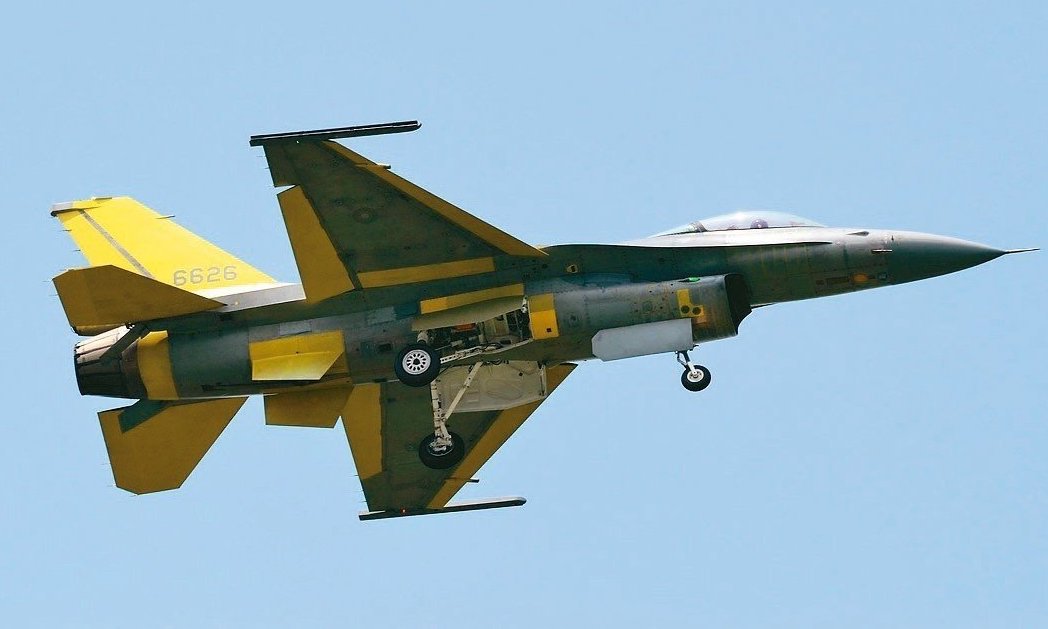
F-16V '4+ Generation' Fighter
While other less prominent single engine designs are in production today, notably the Gripen, JF-17 and Tejas, these are all lighter and less capable than the American and Chinese platforms. The American F-35A is the only other prominent contemporary single engine fighter, although it is still very far from ready for high intensity combat and is unlikely to be until near the end of the decade. While the fifth generation design has considerable potential, it is much heavier, requires much more maintenance and is considerably more expensive to operate than the F-16 and J-10 which limits the possibility of making direct comparisons. Comparing the J-10C and the F-16V, however, can offer valuable insight into the state of Chinese and American military aviation - and which will prevail both in a potential conflict and on export markets.
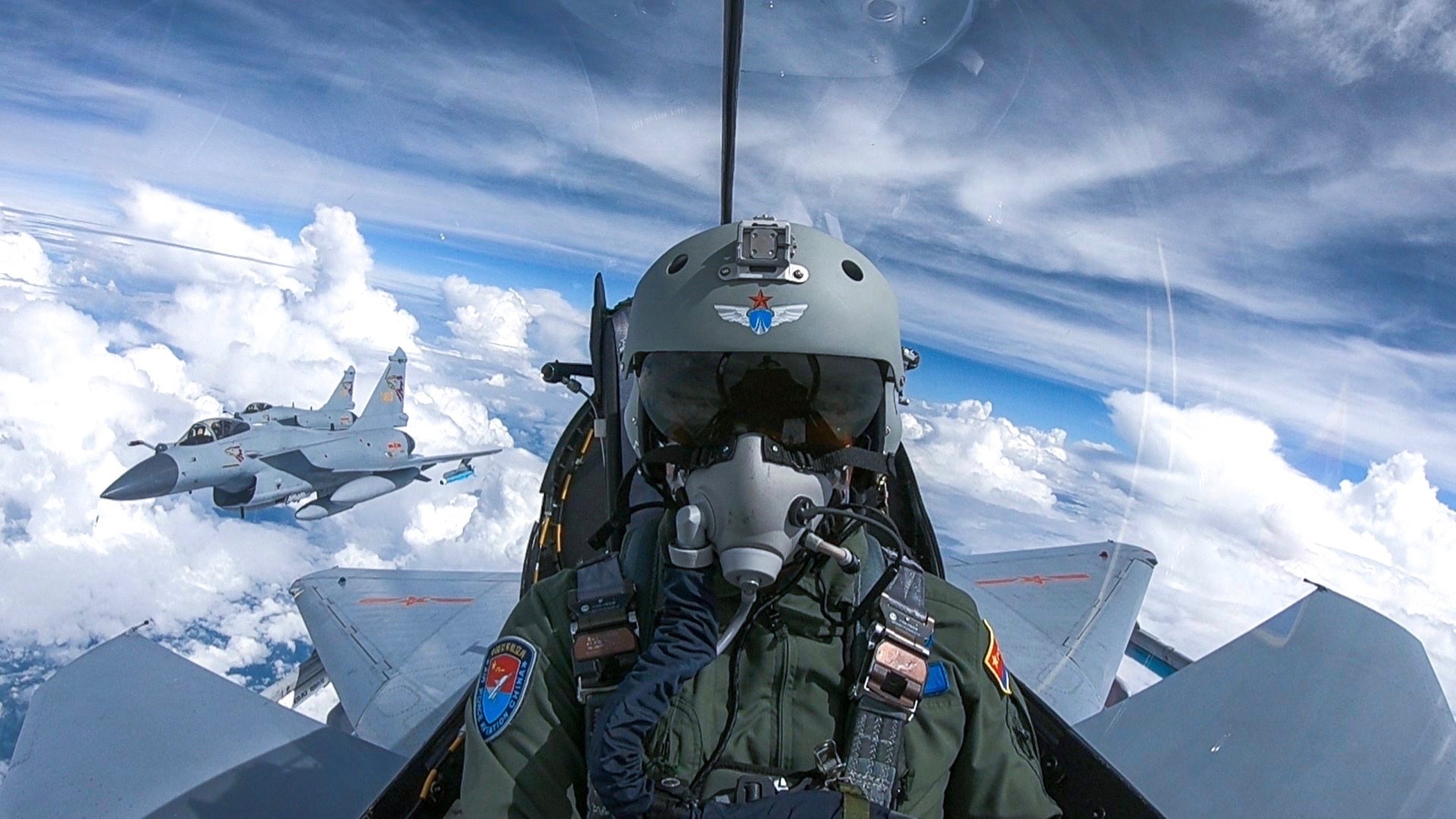
J-10C '4++ Generation' Fighters
The first F-16s entered service in 1978, meaning the airframe is now approaching 45 years old with no orders for the type from the U.S. Military for several years. The F-16V’s alterations to the original design are relatively conservative. There are no reductions to the radar cross section or applications of stealth coatings and no improvements to the F110 engine's thrust have been made. Upgrades are restricted to avionics, with new cockpit displays, electronic warfare systems and an AESA radar all integrated. The fighter deploys the same AIM-120C missile as regular F-16 variants, although some reports indicate it could integrate AIM-120D missiles with a longer 180km range in future. The F-16V overall represents a cheaper idea for an ‘enhanced F-16’ to the F-16E - developed for the United Arab Emirates, the F-2 developed for Japan, and the F-21 concept currently being marketed to India - all of which have seen far more ambitious enhancements from high composite airframes and new more powerful engines.
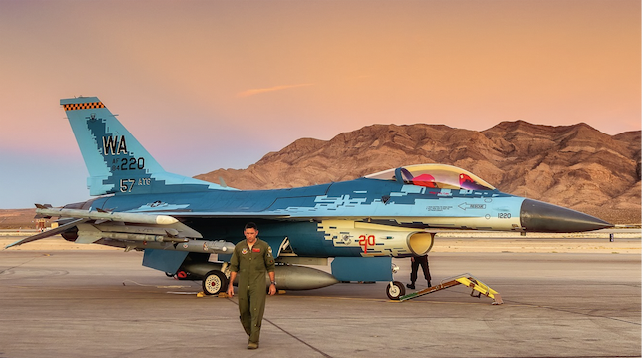
American F-16 Fighting Falcon
The first J-10 fighters entered service in 2006, with the design benefitting from new technologies developed since the 1970s to provide a leading single engine platform. The fighter was slightly lighter than the F-16 but had a superior flight performance, with a more powerful AL-31 engine exceeding the capabilities of the American F110, a higher speed and operational altitude and superior manoeuvrability. Although its engine was more powerful, the airframe was slightly lighter which further increases its manoeuvrability advantage. There was not a single field in which the F-16 could boast superior capabilities over the J-10. Not only is the J-10 design more advanced, but the J-10C has seen more comprehensive improvements compared to the original design than the F-16V has relative to the original Fighting Falcon. These have included a reduced radar cross section, applications of stealth coatings, a greater use of composite materials a new more powerful AESA radar and integration of PL-15 air to air missiles. The PL-15 has an estimated range of 250-300km, comfortably outperforming any existing American design. The J-10C also benefits from integration of new WS-10B engines, which further increases the discrepancy between its own thrust and that of the F-16 with the new engine boasting considerably greater power than the AL-31. The WS-10B also benefits from three dimensional thrusts vectoring systems - the only non-Russian fighter to do so - providing a massive advantage in manoeuvrability. The F-16 has not integrated any kind of thrust vectoring engines.
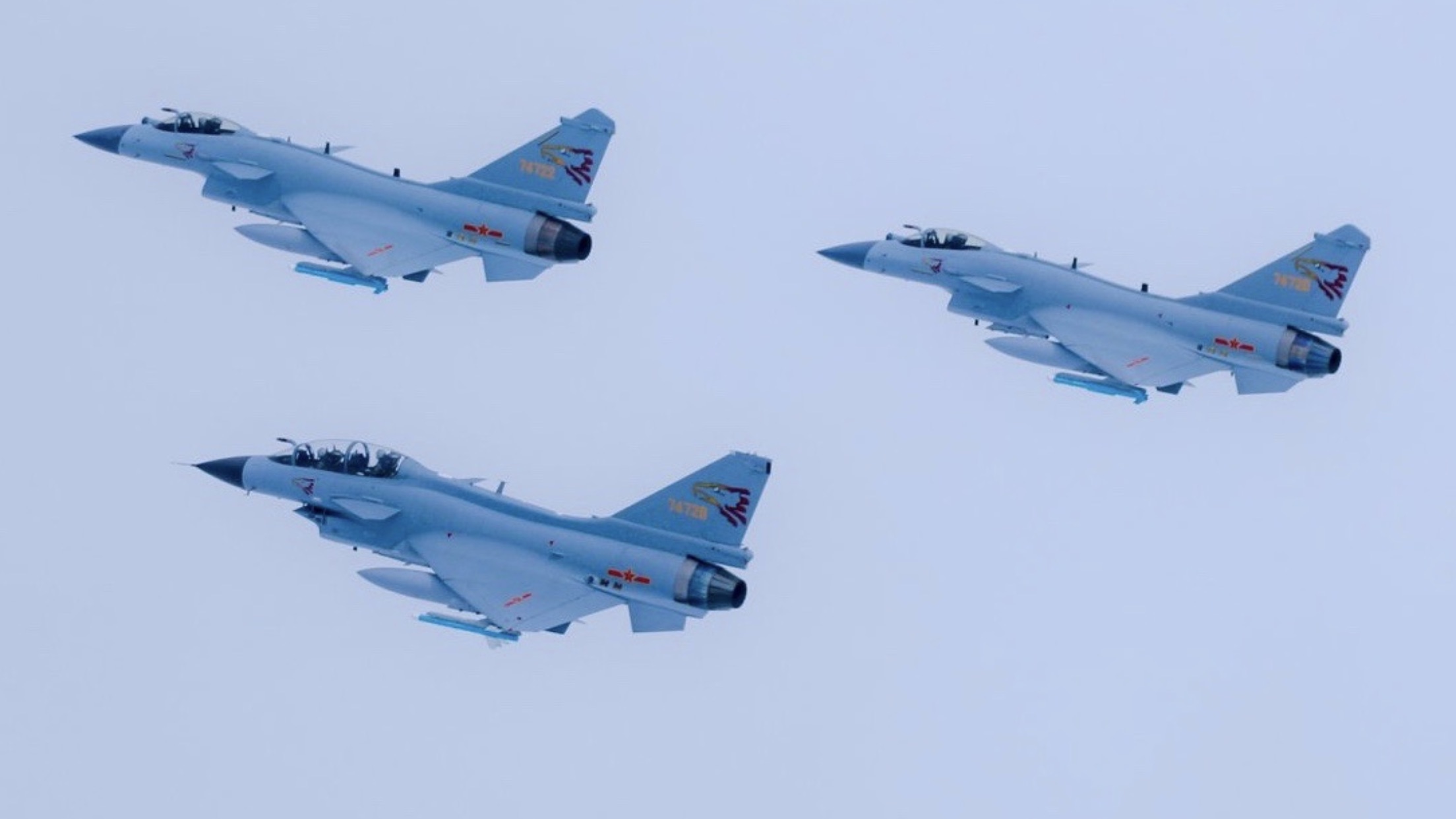
J-10C '4++ Generation' Fighters
Ultimately the superiority of the J-10C is overwhelming. The two jets may be well matched in terms of electronic warfare systems and situational awareness - although export variants of the F-16V will have a disadvantage due to downgraded avionics - the J-10C’s advantages in weaponry and flight performance are overwhelming. As stealth fighters continue to proliferate, the J-10 also has the advantage of integrating an infra red search and tracking system (IRST) allowing it to more effectively lock onto stealth fighters at medium ands short ranges. An IRST also allows the fighter to maintain high situational awareness without a radar signature if needed - something the F-16 cannot do. The discrepancy in the capabilities of the American and Chinese single engine fighters is reflected in the fact that the former much older design has not seen interest from the U.S. Air Force - while the J-10C continues to be mass produced and fielded by elite Chinese units.
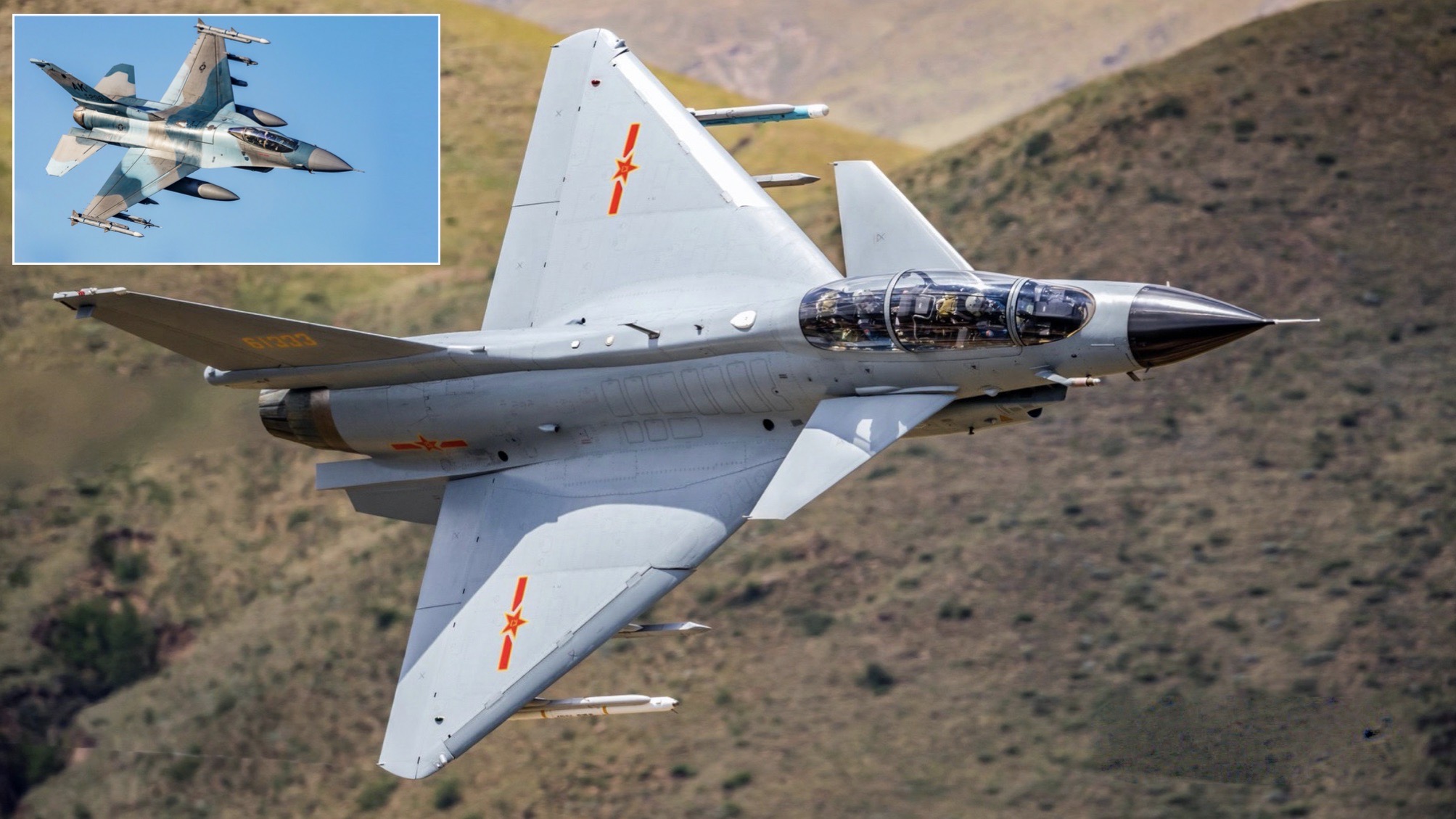
 militarywatchmagazine.com
militarywatchmagazine.com
Which Lightweight Single Engine Fighter Would Prevail in an Air War
Entering service in 2017 and 2018 respectively, the American F-16V and Chinese J-10C represent two of the most capable lightweight fighter jets in production today and considerable improvements over older baseline fourth generation designs. With each weighing approximately 13,000kg, deploying similarly sized radars, similar single engine configurations and similar weapons payloads, the aircraft are in many ways highly comparable. Both are being marketed for export today. The large majority of fighter jet classes in production today are configured with twin engines, from heavyweights such as the J-20 and F-15EX to medium designs such as the MiG-35 and Eurofighter, and even lightweight platforms such as the Kowsar and upcoming Taiwanese Brave Eagle. This places the J-10 and F-16 in a class of their own among modern fighter designs.

F-16V '4+ Generation' Fighter
While other less prominent single engine designs are in production today, notably the Gripen, JF-17 and Tejas, these are all lighter and less capable than the American and Chinese platforms. The American F-35A is the only other prominent contemporary single engine fighter, although it is still very far from ready for high intensity combat and is unlikely to be until near the end of the decade. While the fifth generation design has considerable potential, it is much heavier, requires much more maintenance and is considerably more expensive to operate than the F-16 and J-10 which limits the possibility of making direct comparisons. Comparing the J-10C and the F-16V, however, can offer valuable insight into the state of Chinese and American military aviation - and which will prevail both in a potential conflict and on export markets.

J-10C '4++ Generation' Fighters
The first F-16s entered service in 1978, meaning the airframe is now approaching 45 years old with no orders for the type from the U.S. Military for several years. The F-16V’s alterations to the original design are relatively conservative. There are no reductions to the radar cross section or applications of stealth coatings and no improvements to the F110 engine's thrust have been made. Upgrades are restricted to avionics, with new cockpit displays, electronic warfare systems and an AESA radar all integrated. The fighter deploys the same AIM-120C missile as regular F-16 variants, although some reports indicate it could integrate AIM-120D missiles with a longer 180km range in future. The F-16V overall represents a cheaper idea for an ‘enhanced F-16’ to the F-16E - developed for the United Arab Emirates, the F-2 developed for Japan, and the F-21 concept currently being marketed to India - all of which have seen far more ambitious enhancements from high composite airframes and new more powerful engines.

American F-16 Fighting Falcon
The first J-10 fighters entered service in 2006, with the design benefitting from new technologies developed since the 1970s to provide a leading single engine platform. The fighter was slightly lighter than the F-16 but had a superior flight performance, with a more powerful AL-31 engine exceeding the capabilities of the American F110, a higher speed and operational altitude and superior manoeuvrability. Although its engine was more powerful, the airframe was slightly lighter which further increases its manoeuvrability advantage. There was not a single field in which the F-16 could boast superior capabilities over the J-10. Not only is the J-10 design more advanced, but the J-10C has seen more comprehensive improvements compared to the original design than the F-16V has relative to the original Fighting Falcon. These have included a reduced radar cross section, applications of stealth coatings, a greater use of composite materials a new more powerful AESA radar and integration of PL-15 air to air missiles. The PL-15 has an estimated range of 250-300km, comfortably outperforming any existing American design. The J-10C also benefits from integration of new WS-10B engines, which further increases the discrepancy between its own thrust and that of the F-16 with the new engine boasting considerably greater power than the AL-31. The WS-10B also benefits from three dimensional thrusts vectoring systems - the only non-Russian fighter to do so - providing a massive advantage in manoeuvrability. The F-16 has not integrated any kind of thrust vectoring engines.

J-10C '4++ Generation' Fighters
Ultimately the superiority of the J-10C is overwhelming. The two jets may be well matched in terms of electronic warfare systems and situational awareness - although export variants of the F-16V will have a disadvantage due to downgraded avionics - the J-10C’s advantages in weaponry and flight performance are overwhelming. As stealth fighters continue to proliferate, the J-10 also has the advantage of integrating an infra red search and tracking system (IRST) allowing it to more effectively lock onto stealth fighters at medium ands short ranges. An IRST also allows the fighter to maintain high situational awareness without a radar signature if needed - something the F-16 cannot do. The discrepancy in the capabilities of the American and Chinese single engine fighters is reflected in the fact that the former much older design has not seen interest from the U.S. Air Force - while the J-10C continues to be mass produced and fielded by elite Chinese units.

America’s F-16V vs. China’s J-10C: Which Lightweight Single Engine Fighter Would Prevail in an Air War
Entering service in 2017 and 2018 respectively, the American F-16V and Chinese J-10C represent two of the most capable lightweight fighter jets in production today and
Agree. Only benefit of J-10c over JF17 b3 is range and payload capacity. Radar/EW/electronics is supposed to be at par. So only rationale is to beef up post haste. Maybe they are to fill the gap Egyptian Mirages were supposed to fill or there is delay in blk3. If that is th2e case then then we will be getting existing airframes so that most probably are early A/B models with non AESA Radar and AL31F engine.
Now J-10c with AESA & WS-10 engine is something to chew on (even though it may impact blk3 final acquisition). WS-10 would be common with J15. And may replace Mirages in deep strike roles.
Sir J10 later versions are optimized to fly at high speeds even near to ground, further their AESA radar is at least supposed to be much better i.e in category of Medium weight or bigger fighters, supposedly having range of more than or equal to 200 KM for 3m2 targets further shall have longer range for ground targets. Chinese are using much better WVR high off bore sight missile PL10.
J10 C or equivalent can be a perfect jet to replace Mirages for tactical roles in PAF, it may not require other jets to provide cover during attack missions.
Very well described, its seem PAF post 27 Feb events decided to increase strike capabilities so inductions of new J10C along exiting Mirages will good combo, will also reduce burden and dependency on MiragesSir J10 later versions are optimized to fly at high speeds even near to ground, further their AESA radar is at least supposed to be much better i.e in category of Medium weight or bigger fighters, supposedly having range of more than or equal to 200 KM for 3m2 targets further shall have longer range for ground targets. Chinese are using much better WVR high off bore sight missile PL10.
J10 C or equivalent can be a perfect jet to replace Mirages for tactical roles in PAF, it may not require other jets to provide cover during attack missions.
Now lets hope this deal materialized in actual in near future
Mastankhan
THINK TANK
Just an interesting memory - Pak engineers helped design the inlet of the J-10s (basically fixed a problem the Chinese were facing back then). How the world has changed since then...
Hi,
For that very reason I wanted the AVM Latif's interview in english---so that the world would know about pakistan's technical capabilities---.
